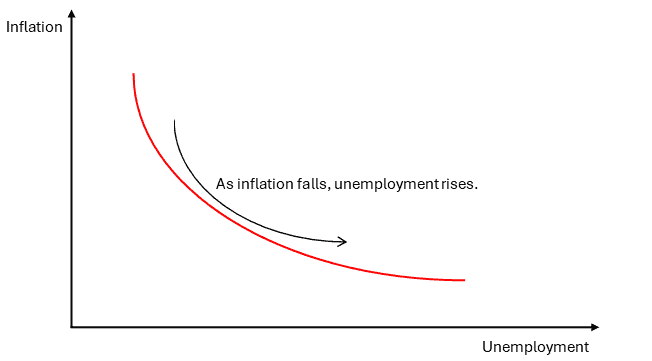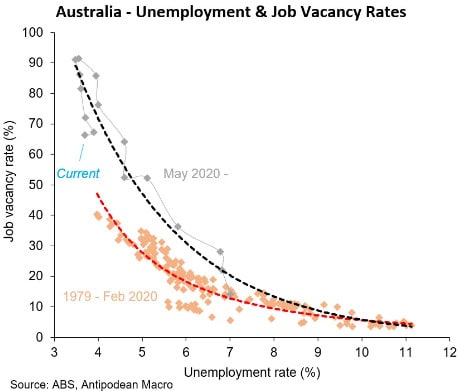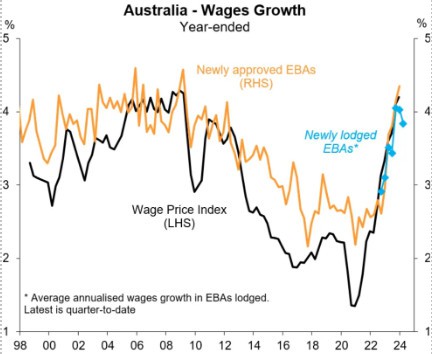- The first step is making the call.
- 1300 022 482
- hello@searchpartyproperty.com.au
Strong Job Figures – Good News for Property?

The job market has exploded.
According to ABS figures, job numbers rose by 116,500 in February alone, dropping the unemployment rate from 4.1% to 3.7%. This came as a shock to many forecasters, defying even normal expectations of a seasonal boost in job market activity.
This was the largest monthly increase in job figures for at least a decade, according to Reuters’ findings.

You’d be forgiven for concluding that this is fantastic news for the property market (as well as the broader economy).
In theory, a rise in employment means more overall income, creating more demand for property.
However, the current situation may not be quite so straightforward, mainly due to an unprecedented phenomenon that economists have named:
‘Immaculate Disinflation’
Despite what you might expect from an economist, this isn’t nonsensical jargon – it’s actually a perfect description for what is a genuine economic miracle.
Traditionally, we expect there to be an inverse relationship between unemployment and inflation.
Lower unemployment suggests that an economy is operating closer to maximum productivity – creating more growth and higher inflation.
Higher unemployment suggest that an economy is operating further from optimal productivity – creating less growth and lower inflation.
In economic theory, this relationship is described by something called the Phillips Curve:

So, imagine an economy with high inflation – if the central bank decides to lift interest rates to bring inflation down, a rise in unemployment would be expected as we move down and to the right of the Phillips Curve.
However, in the Australian economy right now, this just isn’t happening!
Offered a choice of either higher inflation or higher unemployment, central bankers will normally opt for higher unemployment as the lesser of two evils.
And, with the most aggressive rate hiking cycle on record, the RBA has certainly lowered Australia’s inflation rate, but unemployment is not rising.
This is what the term ‘immaculate disinflation’ is referring to. Seemingly, we’re experiencing disinflation (a decrease in inflation), without the trade-off of high job losses.
We’re somehow managing to both have our cake and eat it too – and it isn’t just us. This phenomenon is taking place across the developed world.
In the United States, the Federal Reserve Bank managed to bring inflation down from 9.1% to just 3.2%, in the interval between June 2022 to July 2023. Across that same period, unemployment also fell.
But what’s causing this?
Unfortunately, it’s very difficult to tell. This is uncharted territory for monetary policy and experts are pretty baffled.
On one hand, low unemployment, alongside a fall in inflation, could offer a much needed boost to sentiment and consumer confidence. On the other hand, this may be a sign that there is some level of underlying inflationary pressure, which might exacerbate the effect of an eventual rate cut.
Some have argued that this trend of immaculate disinflation points to a fundamental misunderstanding as to what had been causing inflation all along.
The theory goes that inflation was originally caused by supply chain complications (due to the Ukrainian conflict, etc), and not excess demand. Now that supply chain issues are beginning to resolve themselves, inflation has begun to settle – and that this process is detached from the effect of interest rate hikes.
It’s a relatively sound idea, and it’s gained quite a lot of support. White House economists even published a blog article arguing in favour of this interpretation. Nevertheless, it’s difficult to conclusively prove.
In Australia’s case, some other context is also important to note.
Traditionally, job figures are a lagging indicator of productivity, yet Job vacancies remain particularly high, despite the fall in unemployment and an overall economic slowdown:

This set of circumstances generally indicates a ‘seller’s market’ for labour, with the added competition from higher job vacancies contributing to wage growth:

This may lend some credence to the notion that current interest rates are, for now, keeping a lid on underlying inflationary pressures. Though, an imminent rate cut may then risk arriving too early if based upon the inflation rate alone. Or, it may still be the case that, thanks to resolved supply chain complications, the effect of interest rates will prove immaterial.
In any case, the highly uncertain nature of ‘immaculate disinflation’ will likely add to the RBA’s level of caution in rate setting. The most likely impact, if anything, is potentially a delay to the rate cuts expected later this year.
Want to discuss this further?
For expert guidance in property strategy, and what it could mean for you as a property investor, book in for a free consultation to make informed decisions, tailored to your investment goals. Don’t let affordability challenges hinder your success. Act now with Search Party Property!




